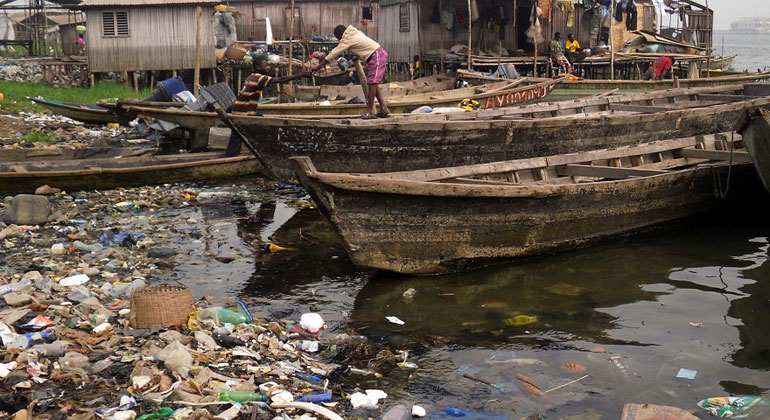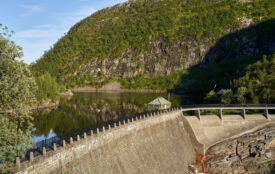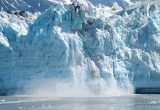“The Venice of Africa” sinks into the rubbish
Lake Nokoué in Benin is Threatened Lake of the Year 2019
Waste and chemicals jeopardise the already fragile ecosystem of Lake Nokoué in Benin, West Africa. Waste, untreated household and industrial waste water are disposed in the lake. Urgent action is needed to mitigate the human impact on the lake and ensure a sustainable future for the generations to come
The pile-dwelling village of Ganvié on the northern shore of Lake Nokoué in Benin, the largest African city built entirely on stilts, is also known as the “Venice of Africa”. Cotonou, the country’s largest city with nearly 1 million inhabitants, lies on the narrow stretch of land on the opposite shore that separates the lake from the Atlantic Ocean. The shallow lake itself and the mouth of the river Ouémé form an extensive wetland area and are a refuge for numerous rare and endangered animal species such as the African Manatee. This sounds very idyllic at first. But the reality at Lake Nokoué looks different.
Dramatic conditions
“Lake Nokoué is one of the main sources of fish in Benin and its increasing pollution threats the environment, aquatic fauna and puts human health at risk,“ says Mr. Fataï Aina, the executive director of the Living Lakes partner organisation Amis de l’Afrique Francophone-Bénin (AMAF-BENIN) that works for the sanitation, protection and conservation of Lake Nokoué.
The cities lack sewers and all household waste is dumped into the water under the city every day. Faeces from toilet facilities built on stilts are released directly into the lake. Phosphates, nitrate, sulphate, chloride, ammonium from the decomposition of nitrogenous waste, lead from car batteries, batteries and scrap of all kinds are released into the lake via the drainage system from the wild garbage dumps of the city of Cotonou. Residues of pesticides and chemical fertilisers, as well as organic matter and nutrients from the food industry, are especially during floods dumped into Lake Nokoué by the river Ouémé, which crosses almost the whole country. Another problem is the smugglers’ trade of the so-called “kpayo”, an adulterated fuel that is partially released into the water during transport.
The poor hygienic conditions also lead to diseases such as diarrhoea, schistosomiasis, cholera, dysentery, and typhoid fever, which kill many children under the age of 5 every year. Since Lake Nokoué belongs to the main source of fish production in Benin, the serious pollution poses an existential threat to people and their health, as well as to the environment and biodiversity.
High time for changes
In order to raise awareness among the responsible Beninese authorities and to protect the local population, the Global Nature Fund together with the local Living Lakes partner organisation Amis de l’Afrique Francophone-Bénin (AMAF-BENIN) has named Lake Nokoué the “Threatened Lake of 2019” on 2 February, the World Wetland Day.
To ensure the survival of the local inhabitants and the last populations of the African Manatee, it is essential to build sanitary facilities such as latrines and treatment plants for domestic and industrial wastewater. The most important activities that AMAF-BENIN has already carried out are, above all, small-scale rehabilitation measures on the banks of the river and awareness campaigns in the local communities, which are beginning to have a positive impact.
First steps in the right directionThe mangrove forests at the transition between the lagoons and the open sea form a particularly valuable habitat worth protecting. Their conservation is of great importance not only for the survival of rare animal and plant species, but also for local fishing. With the financial support of the GNF and the Rapunzel Hand in Hand-Fund, AMAF-BENIN just started carrying out a project to protect biological diversity. In addition to reforestation of degraded forest and mangrove areas, training local hunters, fishermen and representatives of local authorities in the sustainable management of natural resources is a priority.
- Further information and an interview with AMAF-BENIN’s executive director Fataï Aina are available at: www.globalnature.org/ThreatenedLake20
- Interview with Fataï Aina








